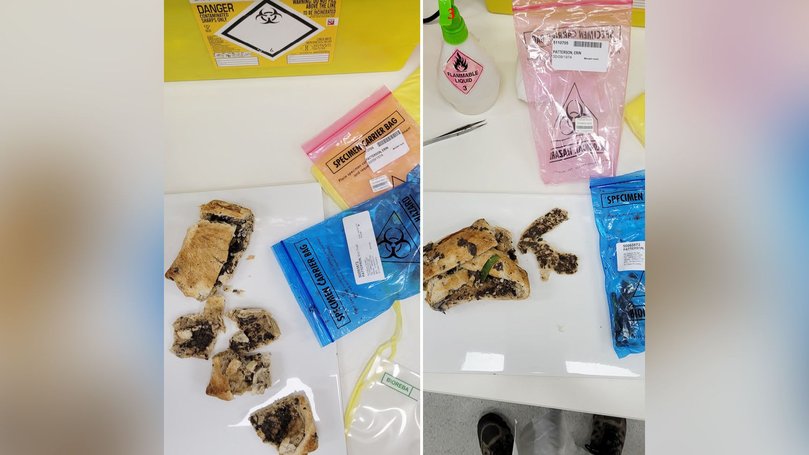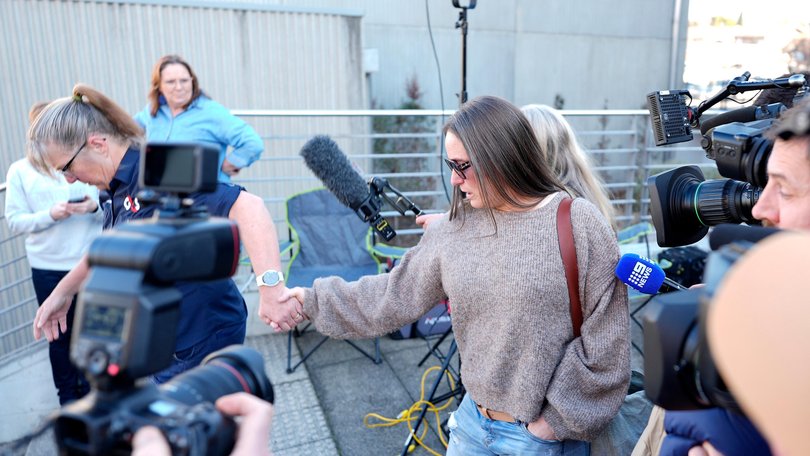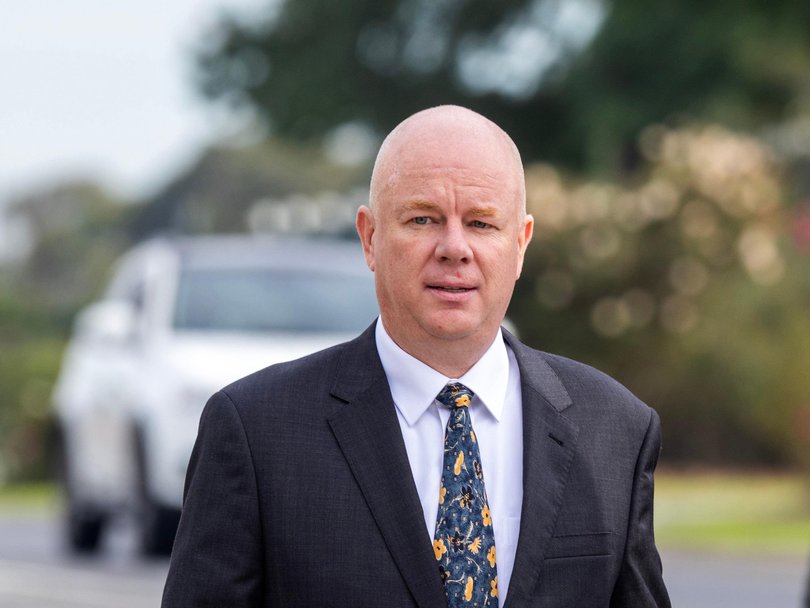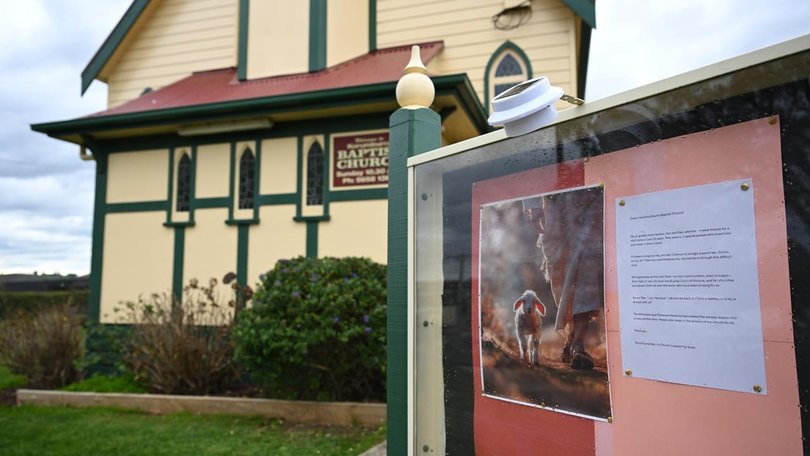Mushroom trial secrets: ‘Special treatment’, cold cell, strange requests and evidence photos as Erin Patterson faces life in prison

The judge in Erin Patterson’s triple-murder trial has made her case “virtually appeal-proof” and it will be difficult for her to successfully challenge her convictions, a legal expert says.
Patterson, 50, is facing a sentence of life in prison for three murders and one attempted murder of her estranged husband’s family, and is expected to return to court for a pre-sentence hearing later in 2025.
The mother of two will have 28 days from the date of her sentence to begin the process of lodging an appeal, if she chooses to pursue one.
Sign up to The Nightly's newsletters.
Get the first look at the digital newspaper, curated daily stories and breaking headlines delivered to your inbox.
By continuing you agree to our Terms and Privacy Policy.But Emeritus Professor in Law at the University of South Australia Rick Sarre said that would be a difficult task.
Supreme Court Justice Christopher Beale, who presided over the almost 11-week trial in regional Victoria, spent four days delivering his final directions to jurors before they were sent away to deliberate.
This “meticulous detail” has made the case “virtually appeal-proof”, Professor Sarre said.
“I don’t think it will get past the leave to appeal process, even if the lawyers do want to go ahead with it,” he said.
Grounds for any appeal by Patterson would be based on an error in the trial judge’s directions, or if there was an issue in the jury reaching their verdicts, he said.
Professor Sarre did not think the jury’s verdict could be challenged, given it had taken seven days to deliberate.
“It would be a very difficult task for her to mount a successful appeal on the basis of the conviction,” he said.
“We just have to wait at the moment to see what the sentence is to determine whether or not there can be any appeal in terms of severity of sentence.”
Clinical forensic psychologist and criminal lawyer Brianna Chesser said Patterson will likely face “quite a large sentence”.
“We’ve heard during the cross-examination and examination-in-chief that there are some mental health concerns for Ms Patterson,” Dr Chesser said.
“That may well act a mitigating factor in any sort of sentence.”
Evidence photos and revelations


Newly released Supreme Court files included evidence photos showed the beef Wellington leftovers as they were tested by toxicologists, after police found them inside a bin at Patterson’s home.
A video of Patterson discharging herself from Leongatha Hospital minutes after she had arrived was also released.
Images of Patterson at the hospital revealed the pink phone police never recovered, and prosecutors claimed it was used it to find information on death cap mushrooms.
While the jury had viewed all this evidence during the trial, it was not privy to court conversations that occurred while they were out of the room.
On the first day of the trial, Patterson’s lawyers complained that she wasn’t given a doona, nor access to a computer and writing materials in her cell.
Patterson spent the first few nights of her trial cold and sleepless inside a police cell at the local station, as a result of requesting the trial be held in the small Victorian town of Morwell.
Had the trial been conducted in Melbourne, she may have been afforded more comforts from inside Dame Phyllis Frost Centre, a maximum-security women’s prison, where she was driven back to every weekend over 11 weeks.
“At some stage she was given a blanket, but she spent the night cold — and awake because she was cold — and she can’t operate like that,” defence barrister Colin Mandy said on April 29.
There had been “some suggestion to her that she wasn’t going to get special treatment by custody officers”, he said.
“Someone who is in police cells for five weeks, facing a murder trial . . . with a massive brief of evidence, should be afforded some accommodation,” he said.
“Because in some ways . . . she requires special treatment so that we can do our job properly, so that she can provide us with proper instructions, so that she’s not uncomfortable.”
Photographers and camera operators outside the court were banned from photographing Patterson during the trial, with a prohibition on “any images of the accused which suggest, expressly or impliedly, that she is in custody”.
Patterson, who only had one supporter in court — her friend Ali Rose Prior, was known among media to give death stares if they locked eyes with her.
Media were limited to six seats in the court room due to the immense interest, and because members of the public couldn’t watch it remotely and had to attend in person.
Those seats were directly in front of Patterson, in the court dock, and to catch a glimpse of her reaction during the trial reporters had to swivel around and face her.
She would often turn her head on an angle and stare directly into the eyes of reporters, leaving a menacing impression.
Simon Patterson’s legal requests

During a break on May 1, he made a “small request” of Justice Christopher Beale.
“The legal process has been very difficult,” he said.
“I have a lot to grieve and am grieving a lot about all this stuff here, as I’m sure you can imagine.
“One thing that is really difficult is not being able to follow what happens.”
He asked the judge if he could make available to him all of the transcripts from the trial and the pre-trial to help him “grieve the legal process”.
Simon had attended court when he gave evidence with a PR adviser, Jessica O’Donnell, which led to a warning from Justice Beale after the judge was told he wanted to issue a statement to media mid-trial.
“Whatever his media adviser might be telling him, it seems to me the most prudent course for him is to defer any statement to the media until after the conclusion of the trial,” the judge said.
Judge’s warnings to commentators
With the world’s attention on the trial, the Supreme Court’s media team, the judge and his associates were monitoring coverage including daily podcasts, live news blogs, radio programs, blogs and television news crosses.
Justice Beale issued several warnings and referred two outlets to prosecutors for potential contempt including The Kyle and Jackie O Show on June 16.
He said the “shock jocks” had commented on the case while on air and used it as an example to warn others on speaking about the trial.
“I encourage all commentators to engage their brains before they open their mouths, as they may otherwise land themselves and their organisations in hot water,” Justice Beale said.
A second referral to prosecutors was made by the judge about a visiting psychologist experienced in serial killers, who spoke about the case at an event in Melbourne on May 31.
Network Ten was warned by the judge about saying it had been “another day of damning evidence” in a news story put to air, and the Mamamia website was told to take down a problematic podcast episode and Facebook post.
Most famous female murderer
Erin Patterson will now go down as the most famous female murderer in Australia, according to senior criminology lecturer and researcher Brandy Cochrane.
The Victoria University senior lecturer said that historically women who kill tended to use “non-confrontational forms of murder” like poisoning, rather than shooting or stabbing.
“There’s a very long history of people being very interested in women who kill because it is such a rarity, as opposed to men’s violence that is kind of regularised in our society,” she said. Dr Cochrane compared the fascination with Patterson to that directed at Lindy Chamberlain, who was convicted and then exonerated over the 1981 death of her daughter Azaria, and particularly the way the public dissected their appearances.
Church tribute to victims

The Korumburra Baptist Church, where victim Ian Wilkinson serves as Pastor paid tribute to the victims “very special people”.
In a message pinned to church’s noticeboard, Don and Gail Patterson — the parents of Simon Patterson — and Gail’s sister Heather Wilkinson were described as special people.
“We all greatly miss Heather, Don, Gail, whether we were friends for a short time or over 20 years,” the notice read.
“They were very special people who loved God and loved to bless others.
“It’s been a long journey, and we continue to lovingly support Ian, Simon and all the Wilkinson and Patterson family members through this difficult time.”
